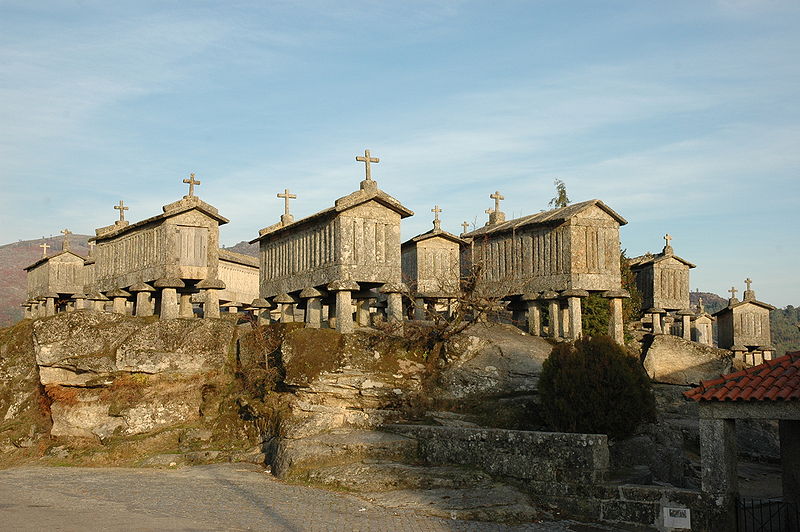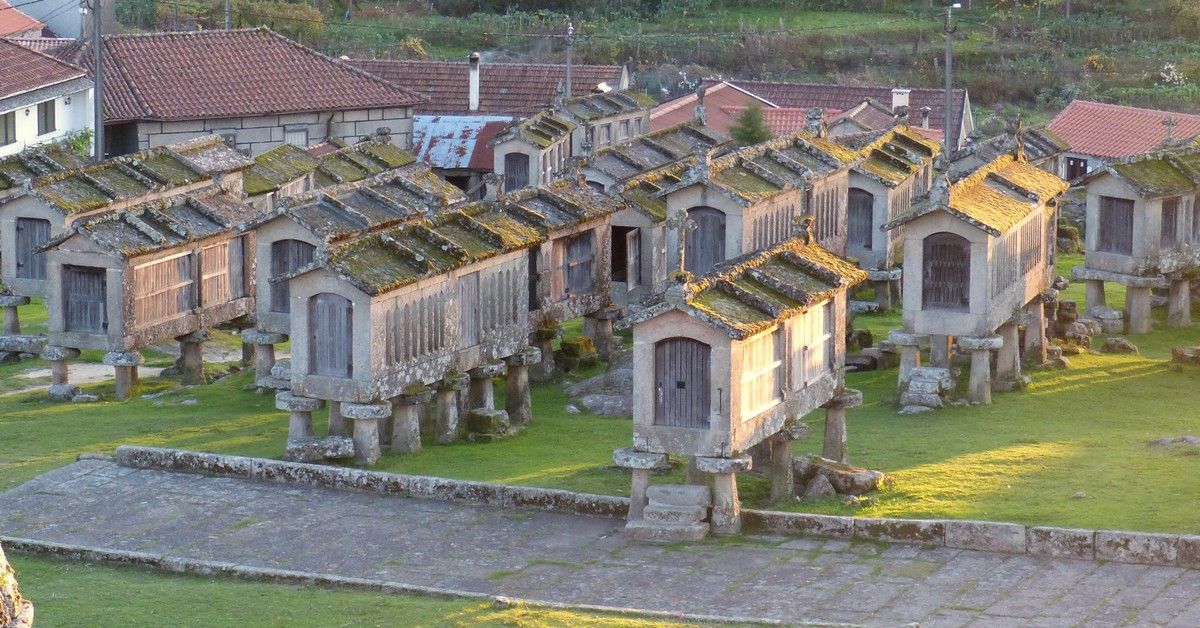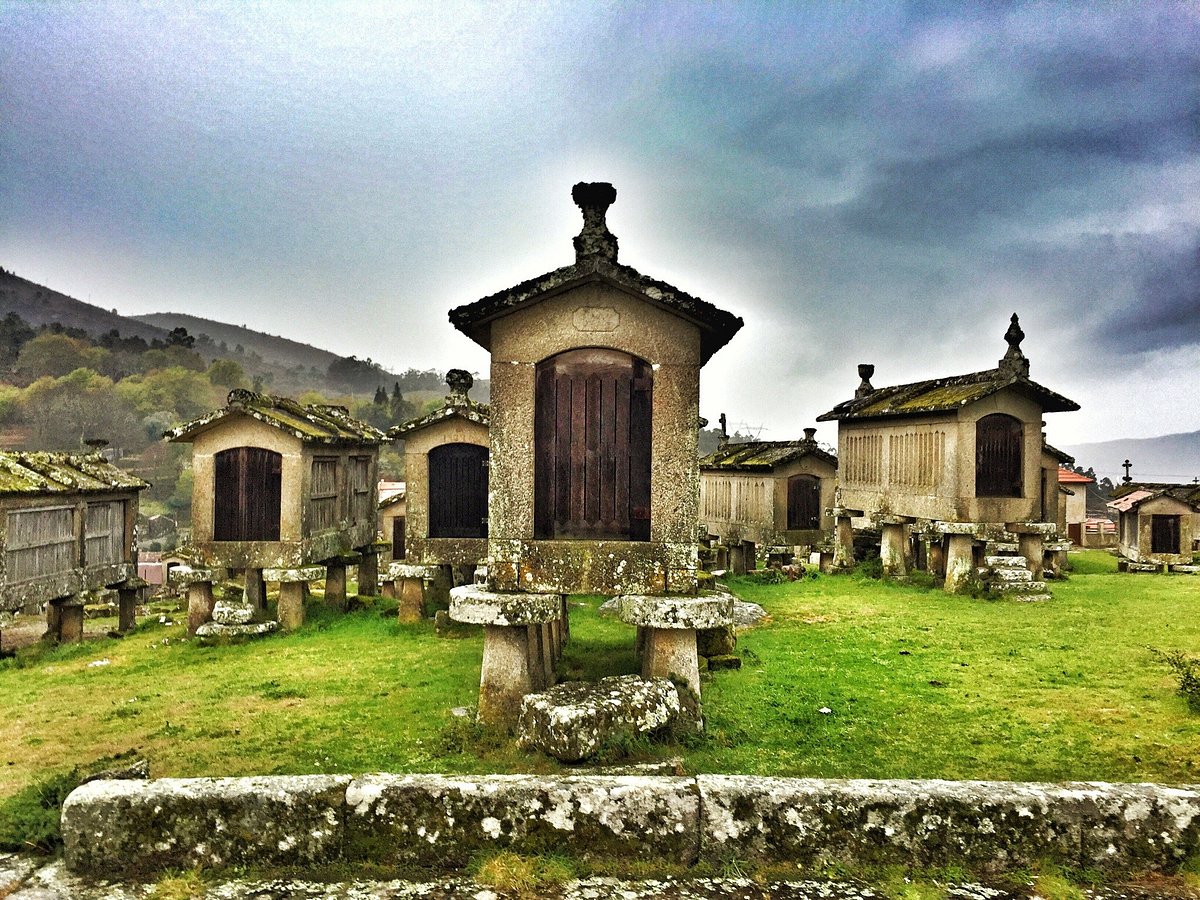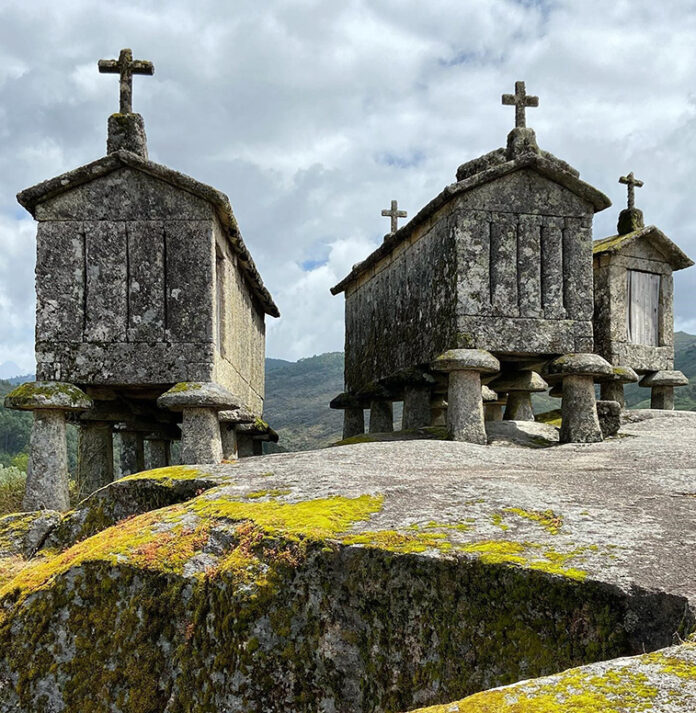The espigueiros, or granaries, are not just architectural structures; they are emblematic icons of Portugal’s rich rural heritage. Found predominantly in the northern regions of the country, these structures have been instrumental in preserving cereals and have stood the test of time as symbols of agricultural tradition. The village of Soajo, nestled in the Peneda-Gerês National Park, is home to one of the most significant collections of these historic granaries. This article explores the architectural beauty, cultural significance, and enduring legacy of the Espigueiros of Soajo.
The Architectural Marvel of Espigueiros

Originating from ancient times, the espigueiros are elevated structures crafted from wood, stone, or granite. These granaries, usually supported by stone pillars or stakes, feature a rectangular or square base with walls made of wooden slats and a gabled roof. This unique design allows for proper ventilation, essential for drying and preserving cereals, particularly corn. The architectural integrity of these granaries showcases the ingenuity of local craftsmen, who built them without the use of mortar, relying solely on their skill in stone fitting.
The Cultural Significance of Espigueiros

Beyond their practical use as storage units, the espigueiros hold deep cultural significance. They were communal spaces where farmers would gather to share agricultural knowledge, celebrate festivals, and perform rituals related to the agricultural cycle. The geographical distribution of these granaries spans across Portugal, with a significant concentration in the northern regions, including Minho, Trás-os-Montes, and Alto Douro. These regions are home to some of the oldest and most well-preserved espigueiros, which continue to be a vital part of the rural landscape.
The Espigueiros of Soajo: A Living Legacy

The Espigueiros of Soajo, located in the picturesque village of Soajo, are among the most remarkable examples of traditional Portuguese architecture. This collection of 24 granite granaries, arranged in two parallel rows, forms a unique “street” of granaries. Each structure, standing approximately two meters high, is supported by four stone pillars, creating an open space underneath. This design not only protects the stored grain but also ensures adequate air circulation for proper drying.
Dating back to the 18th century, these granaries were originally used to store corn, a staple crop for the local communities. The Espigueiros of Soajo have been classified as a National Monument since 1983, a testament to their historical and cultural importance. The community’s dedication to preserving these structures has ensured their survival, allowing them to continue serving as silent witnesses to the region’s agricultural past.
A Symbol of Community and Tradition

The Espigueiros of Soajo were more than just storage units; they were integral to the social fabric of the community. Farmers used these spaces to exchange knowledge, strengthen communal bonds, and partake in agricultural festivities. The annual celebration of the “Senhor do Mundo,” held on the first Sunday of July, is one such tradition that highlights the cultural importance of these granaries.
The preservation of the Espigueiros of Soajo is a remarkable achievement. Despite the passage of time and the natural elements, these structures remain virtually unchanged, a tribute to the craftsmanship of their builders and the community’s commitment to maintaining their heritage.
A Tourist Attraction with Cultural Depth

Today, the Espigueiros of Soajo attract visitors from around the world who are captivated by their beauty and historical significance. Tourists strolling along the “street” of granaries can admire the intricate stone construction and imagine the lives of the agricultural communities that once relied on these structures. The village of Soajo, with its narrow cobblestone streets and preserved rural environment, offers a glimpse into Portugal’s past, while the surrounding landscapes of Peneda-Gerês National Park provide a breathtaking backdrop for exploring this cultural treasure.
Conclusion
The Espigueiros of Soajo are more than mere granaries; they are symbols of a community’s identity, the ingenuity of its artisans, and the enduring value of tradition. These structures stand as a testament to Portugal’s rich agricultural history and the deep connection between its people and the land. As living monuments, the Espigueiros of Soajo continue to preserve the memory of rural communities and serve as a tangible link to the past, offering visitors a unique insight into the cultural heritage of Portugal.
